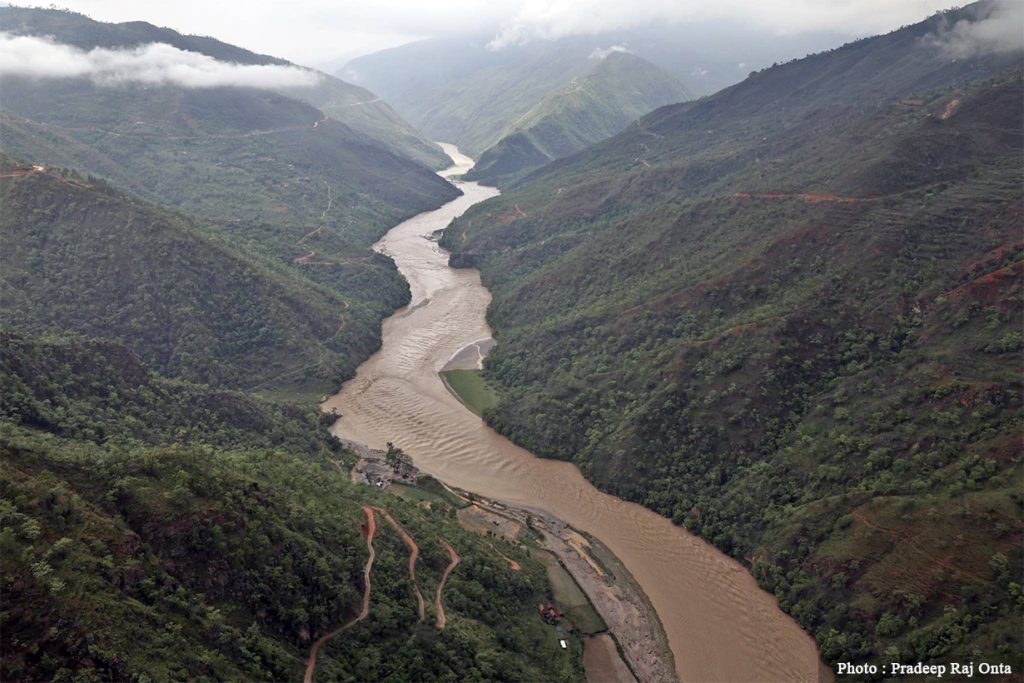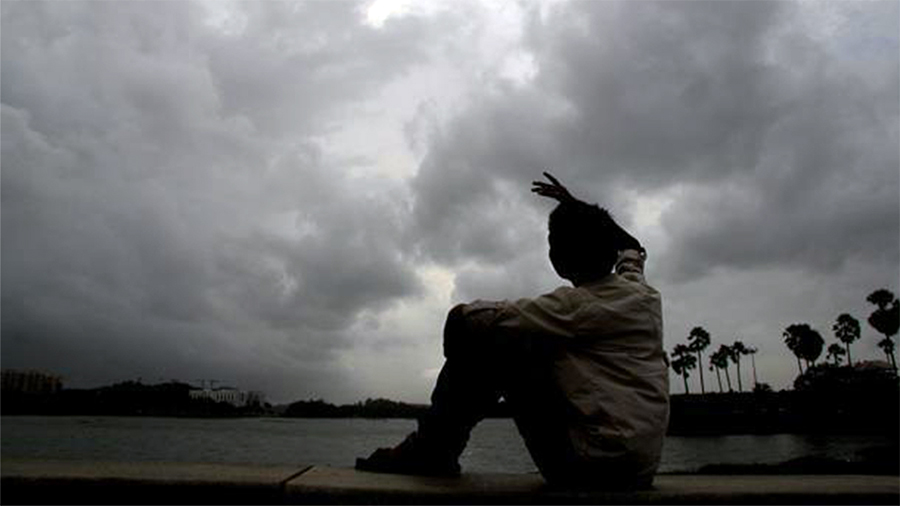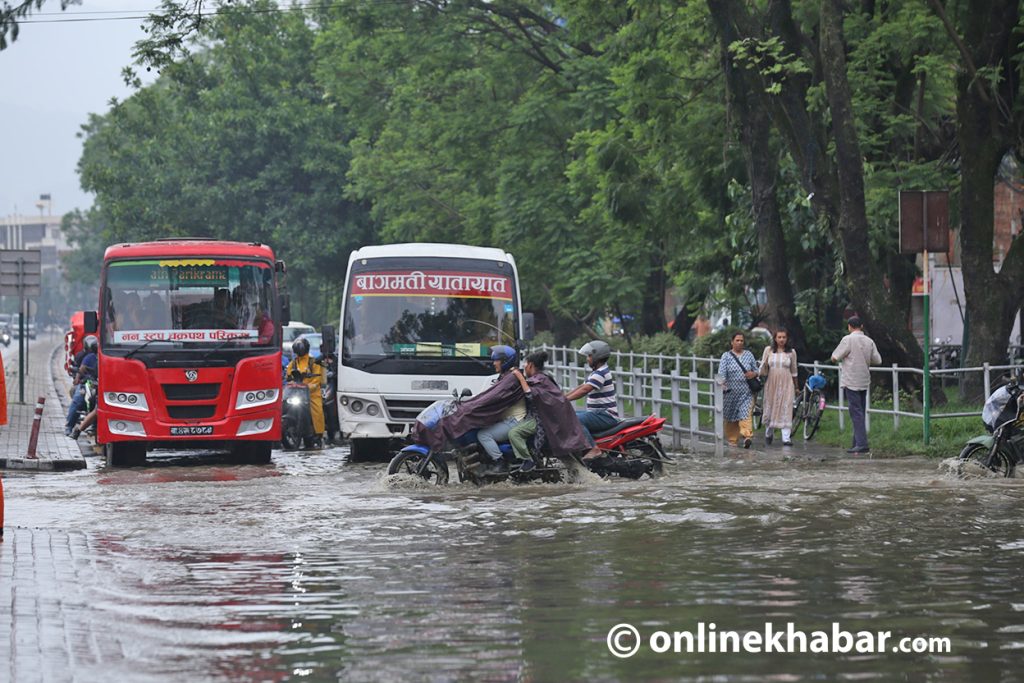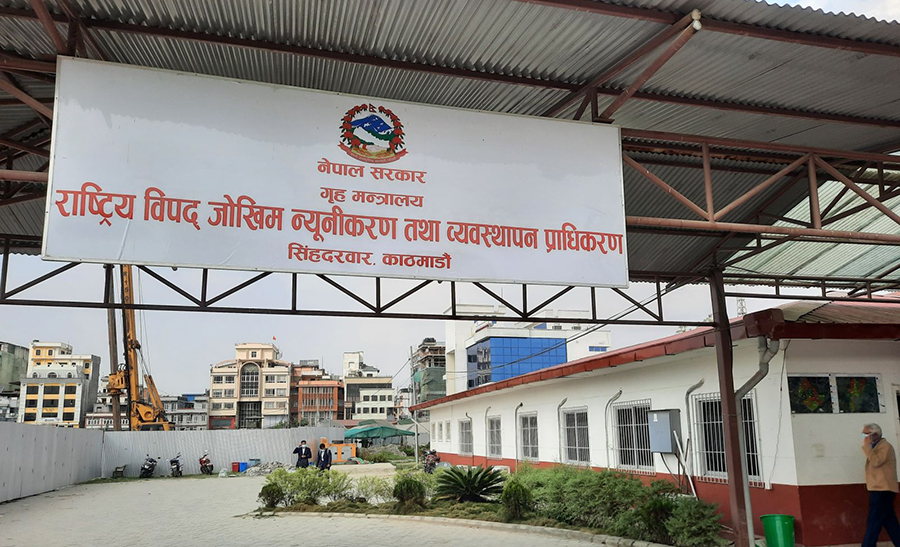
Kathmandu, June 4
The National Disaster Risk Reduction and Management Authority under the Ministry of Home Affairs has estimated that 1.8 million people in 400,000 households will be affected by this year’s monsoon-related disasters.
This is an increase of 600,000 compared to last year. During the monsoon period of 2023, the authority had estimated that 1.25 million people and 286,000 households would be affected.
This year, the number of families that could be directly impacted is estimated at 83,000, and 18,000 families may require rescue and relief.
In anticipation of a greater impact from this year’s monsoon compared to last year, over 31,000 personnel from the army, armed forces, and Nepal Police are planned to be deployed.
The deployment plan includes 10,847 personnel from the Nepal Army, 10,585 from Nepal Police, and 9,924 from the Armed Police Force. Additionally, scouts and other volunteers are also planned to be mobilised. Last year, 10,518 personnel from the Nepal Army, 11,661 from Nepal Police, and 9,490 from the Armed Police Force were deployed.
Koshi Province expected to be most affected
The highest impact from this year’s monsoon is anticipated in Koshi Province, with the least impact expected in Karnali Province. Following Koshi, the most affected provinces are expected to be Madhesh, Lumbini, Bagmati, Sudurpaschim, Gandaki, and Karnali.
The details are mentioned in the Monsoon Preparedness and Response National Action Plan 2024 prepared by the authority, which was approved by the Disaster Risk Reduction and Management Executive Committee chaired by Home Minister Rabi Lamichhane on Monday.
The action plan includes estimates and analysis of the potential rainfall, impacts, and disasters that could arise during this year’s monsoon based on historical records, scientific studies on flood and landslide risks, and forecasts of above-average rainfall for this year’s monsoon period. The projections also consider the impact of recent wildfires and earthquakes, according to Dr Dijan Bhattarai, the spokesperson for the authority.
Regional forecasts
As the monsoon season approaches, the authority has prepared estimates indicating that 22,000 families in Koshi Province may be affected, with 5,000 families requiring rescue and relief.
According to the Department of Hydrology and Meteorology, the eastern region of Nepal is expected to experience normal to heavy rainfall during the monsoon period, hence the higher anticipated impact on Koshi Province. Among the 14 districts in Koshi Province, Jhapa, Morang, Sunsari, and Udayapur are expected to be affected by floods, while the remaining districts may be impacted by landslides. Last year, Koshi Province experienced the highest number of disaster incidents (213) during the monsoon period, with both Koshi and Bagmati provinces recording equal human casualties (17 deaths each).
In Madhesh Province, an estimated 20,000 households may be directly affected, with around 4,000 families needing rescue and relief.
In Bagmati Province, an estimated 7,000 households may be directly impacted, with 1,500 families requiring rescue and relief. In Lumbini Province, an estimated 15,500 households may be directly affected, with 3,000 families needing rescue and relief.
In Sudurpaschim Province, an estimated 5,500 households may be directly affected, with 1,500 families needing rescue and relief. In Karnali and Gandaki provinces, an estimated 5,000 households may be affected in each, but Karnali is expected to have a higher number of families needing rescue and relief (2,500) compared to Gandaki (1,000).
The monsoon typically enters Nepal around June 13 and exits by October 2. During the four-month monsoon period from June to September, Nepal generally receives between 1,430 to 1,530 millimetres of rainfall, accounting for 80 per cent of the annual total rainfall. This heavy rainfall can lead to disasters.
Last year, there were 769 disaster incidents during the monsoon period, resulting in 63 deaths, 69 injuries, and 30 missing persons. A total of 5,937 households were affected, with damages amounting to approximately 331.9 million.
Home Minister’s directive to focus on work
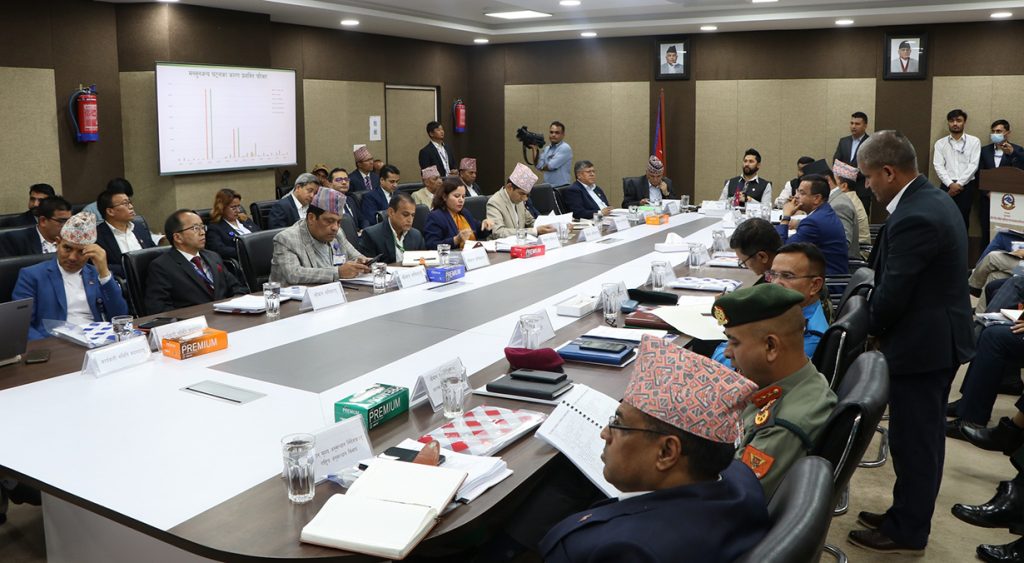
Deputy Prime Minister and Home Minister Rabi Lamichhane, who chaired the meeting of the Disaster Risk Reduction and Management Executive Committee, emphasised that everyone should unite to face the disaster.
He stated that without clear plans and programmes from the Home Ministry, 10 other ministries, 7 provincial governments, and 753 municipalities, it would be impossible to face the disaster, directing that preparations should be the focus instead of holding meetings.
“We will not hold any more meetings after this month. From today’s meeting, the command centre will take all responsibilities,” said Home Minister Lamichhane. “If necessary, we can handle emergencies, but now we need to focus on our work.”
He also promised to resolve any rules or laws that might hinder the mobilisation of available resources.
Command Center at Home Ministry
The Monsoon Preparedness and Response Action Plan outlines the roles and responsibilities of 10 ministries, other government bodies, security agencies, and the private sector, with the Home Ministry establishing a command centre for overall management.
Secretary Eka Narayan Aryal of the Home Ministry stated that the command centre will be led by the joint-secretary level. The command centre will also manage the deployment of helicopters for aerial rescue operations.
For rescue operations, helicopters will be kept ready in Kathmandu, Surkhet, Itahari, Bharatpur, and Pokhara. The command centre will lead the deployment, with the Nepal Army operating the helicopters. Private-sector helicopters will also be mobilized if necessary.
Secretary Aryal mentioned that clearing obstructed roads is the priority this year. Heavy equipment and bulldozers with sufficient fuel and drivers will be kept ready at 10-kilometer intervals in areas prone to landslides. “Previously, leaders used to keep bulldozers close to their areas, but this won’t be allowed this time,” said Secretary Aryal.
Through the Road Department, at least 35 Bailey bridges will be kept ready in seven provinces, with at least five in each province, for immediate deployment to essential locations.
Provincial governments have been instructed to provide at least five rubber boats to security agencies in Tarai districts. Additionally, trained personnel from all three security agencies will be kept ready in the provincial capitals for disaster assistance.
The executive committee decided to authorise district disaster management committees to spend up to Rs 200,000 from district disaster management funds for transporting relief materials within districts, with the regional emergency operation centre responsible for delivering relief materials from storage centres to districts.
District administration offices have also been directed to establish help desks.




